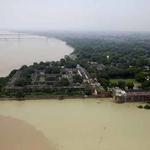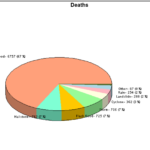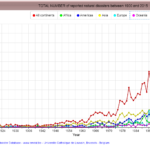The methodology involves a comprehensive approach to developing Flood Disaster Preparedness Indices (FDPI) for Thailand, with a focus on the cases of Ubon Ratchathani and Hat Yai. The FDPI was developed as a typhoon committee’s project as well as an ICHARM project. The outcome was polished, altered, and customized, and we are using the Indices as a selp capacity assessment tool.
Methodology
The development of Flood Disaster Preparedness Indices (FDPI) in Thailand was driven by a need for a standardized set of indicators that could assess the flood preparedness of local communities comprehensively. The methodology was designed to address the complexities of flood disaster management, acknowledging the balance between structural and non-structural measures (UNISDR, 2015) and the significance of community-based disaster risk management, especially in developing countries (Maskrey, 2011).
Literature Review and Theoretical Framework
An extensive literature review was conducted to understand the existing frameworks and measures used globally for evaluating disaster preparedness, with a particular emphasis on flood disasters. This review helped in identifying gaps in existing indices and provided a theoretical basis for developing a new set of indices that are universally applicable, considering both structural and non-structural elements of disaster risk management (Twigg, 2004; UNISDR, 2009).
Field Surveys and Data Collection
Field surveys were conducted in Bangkok, Ubon Ratchathani Province, and Hat Yai District, including interviews and questionnaire surveys. The surveys aimed to gather first-hand information on local disaster preparedness levels, community awareness, and existing infrastructure. This approach aligns with participatory methods recommended in disaster preparedness research, emphasizing local knowledge and engagement (Gaillard & Mercer, 2013).
Creation of Indices and Diagrams
Based on the literature review and field survey data, a comprehensive set of indices was created. The indices covered various aspects of disaster preparedness, from infrastructure and planning to community awareness and leadership. The creation of these indices was informed by best practices in disaster management literature, including the importance of comprehensive planning, community involvement, and the integration of local and scientific knowledge (Paton & Johnston, 2001; Cutter et al., 2008).
Analysis
The collected data were analyzed using principal component analysis and cluster analysis to identify key components of flood disaster preparedness and to categorize communities based on their preparedness levels. This analytical approach is consistent with methodologies used in similar studies, facilitating the identification of patterns and trends across diverse datasets (Jolliffe & Cadima, 2016).
Validation and Iteration
The FDPI was subjected to several rounds of validation, including expert reviews and community feedback sessions. This iterative process ensured the reliability and applicability of the indices across different communities, addressing the need for flexible and adaptable disaster preparedness tools (Few, 2007).
Source Papers
2. Few, R. (2007). Health and climatic hazards: Framing social research on vulnerability, response, and adaptation. Global Environmental Change, 17(2), 281-295.
3. Gaillard, J. C., & Mercer, J. (2013). From knowledge to action: Bridging gaps in disaster risk reduction. Progress in Human Geography, 37(1), 93–114.
4. Jolliffe, I. T., & Cadima, J. (2016). Principal component analysis: A review and recent developments. Philosophical Transactions of the Royal Society A: Mathematical, Physical, and Engineering Sciences, 374 (2065), 20150202.
5. Maskrey, A. (2011). Revisiting Community-Based Disaster Risk Management. Environmental Hazards, 10(1), 42–52.
6. Paton, D., & Johnston, D. (2001). Disasters and communities: vulnerability, resilience, and preparedness. Disaster Prevention and Management: An International Journal, 10(4), 270–277.
7. Twigg, J. (2004). Disaster risk reduction: mitigation and preparedness in development and emergency programming. Humanitarian Practice Network.
8. UNISDR (2009). Terminology on Disaster Risk Reduction. United Nations International Strategy for Disaster Reduction.
9. UNISDR (2015). Sendai Framework for Disaster Risk Reduction 2015–2030. United Nations International Strategy for Disaster Reduction.This methodology reflects a comprehensive approach to developing a set of indices that can assess and enhance flood disaster preparedness at the community level. Through a blend of theoretical understanding, field research, and community engagement, the FDPI aims to contribute significantly to disaster risk reduction efforts in Thailand and potentially other similar contexts globally.





